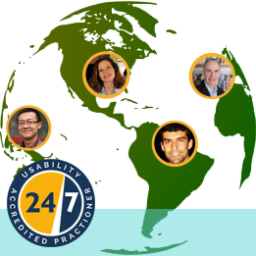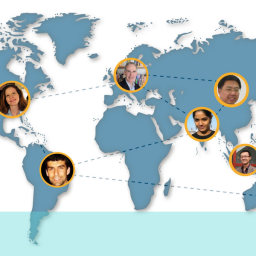At UX24/7 we are fortunate to work with our network of international UX researchers within our Accredited Practitioner Programme.
We decided it would be great to talk to our researchers and get an insight into their industry experiences as well as find out what is unique about UX in their home countries.
In this blog series, we have shared our conversations with each of our researchers from here in the UK, to Brazil, China and many more countries worldwide.

As a consultant, what I frequently see is the absence of strategy, there are lots of websites and products or features that look like nobody stopped and asked ” What does the user need here?” or ” Why do they need that?” and because of that, I constantly see useless fields, texts, processes, or even entire features that aren’t necessary.”
How did you get into the [UX] field?
I started my career as a developer and, after I had spent three months developing a reporting system for a customer, my boss came to me and said that I had done a great job because he hadn’t heard any complaints from the customer. A few months later, I paid the customer a visit and asked them about the report I’d created. What they told me was that they weren’t using my report because they’d created an Excel spreadsheet that solved all their problems.
This is how I realized we should develop products and features that solve users’ problems, not what we think we should. By listening to, observing, and trying to understand our users and their needs, we create software that likely will not be replaced by an Excel spreadsheet.
Any advice for people wanting to get into the [UX] field?
I have a few pieces of advice for people wanting to get into the field:
- Study by yourself with books, blogs and YouTube videos. Every day you need to read at least one article.
- Enrol in a course. It’s good to have more structured content and to meet people.
- Network at events, which is the best way to meet people that can help you, advise you, hire you, or be a partner. Also, you will learn a lot keeping up to date.
- Start building your portfolio, not only with print screens, but by explaining the process, what you did, how the research, the interviews, and the usability tests were done.
What do you enjoy about working in the UX industry?
When you and the team are concerned about user experience, you use all your efforts to create something useful and enjoyable, and there is nothing as good as hearing users say good things about your product. And besides that, every project is new and challenging because you have different business goals and distinct user needs. And this complex scenario is motivating.
What has been your favourite project to work on?
I’m working on a project where elderly people are the users, and because they don’t have experience with technology, we need to create every screen and interaction in the simplest way possible. I’m enjoying this because creating simple things is very complex.
What is the most common usability issue you encounter during your testing?
As a consultant, what I frequently see is the absence of strategy, there are lots of websites and products or features that look like nobody stopped and asked, “What does the user need here?” or “Why do they need that?” and because of that, I constantly see useless fields, texts, processes, or even entire features that aren’t necessary.
What is the one piece of advice you would offer brands to improve their UX?
Empathy! Put yourself in the users’ shoes. Listen to and observe your users all the time, it’s a continuous process.
What future UX trends do you envision?
As a UX professional, we need to be up to date with what’s happening in all technological fields like Virtual Reality, self-driving car, drones, etc. And we need to think about all options when creating a product, why not use Virtual Reality or Gamification, for example.
What is unique about the UX in your country?
That’s a hard question because Brazil is a large country and every region is very different, but what I like about UX in Brazil is that when you interview someone or apply a usability test, frequently, the user becomes a friend. It’s funny. We have many UX events here and every time I go to one of them, I meet cool people as well. So, maybe what I like about UX in Brazil are the people that I’ve been meeting because of my job.
If you would like to join our growing international roster of freelance UX professionals get in touch at hello@ux247.com





